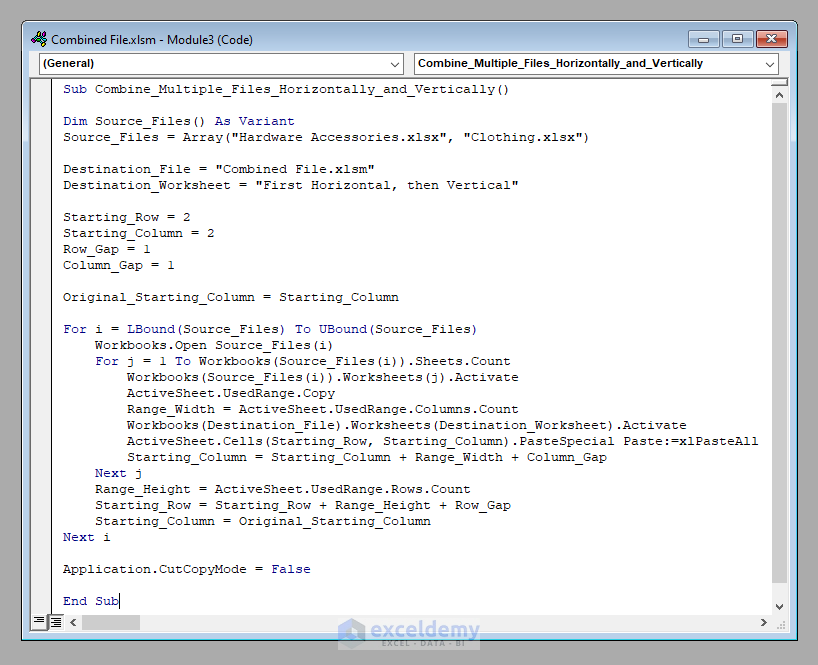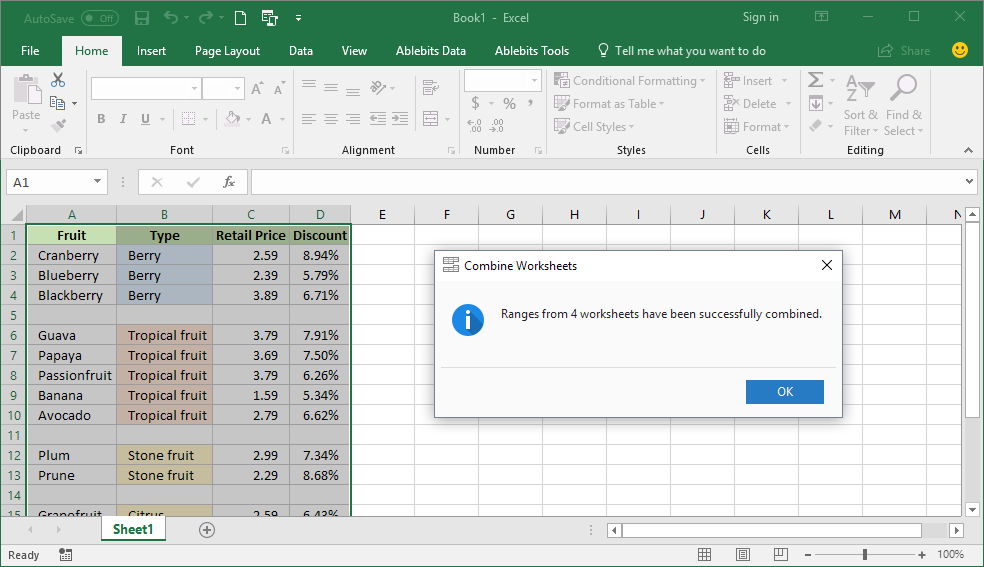5 Ways to Merge Excel Sheets into One File

Merging Excel sheets into a single file can be an invaluable skill when you need to combine data from multiple sources, create a unified report, or manage a large dataset. Here are five practical methods to help you merge Excel sheets into one file, each catering to different skill levels and needs.
1. Using Excel's Built-in 'Consolidate' Feature

Excel offers a straightforward method to consolidate data using its built-in feature. This is particularly useful for summarizing data from multiple worksheets into one master sheet without losing any information.
- Open your Excel workbook where the sheets to be merged reside.
- Click on the 'Data' tab, then select 'Consolidate' from the 'Data Tools' group.
- In the 'Function' box, choose the way you want to combine the data (sum, average, etc.).
- Select the range of data from the first sheet you want to merge, then add this range by clicking 'Add'.
- Repeat the process for other sheets or workbooks if needed.
- Ensure that 'Top row' and 'Left column' are selected for labels if your data includes headers.
- Click 'OK' to merge the data.
Your data will now be combined into one location. However, this method is best for numerical data and when you want to perform operations on the data as it's merged.
👀 Note: If your data spans across multiple workbooks, open each workbook in separate Excel windows to easily reference them.
2. Manual Copy and Paste

For those who prefer simplicity or have fewer sheets to merge, the good old copy-paste method can be effective:
- Open the workbook containing all the sheets you want to merge.
- Select all the data from the first sheet by pressing Ctrl+A, then copy with Ctrl+C.
- Go to your destination sheet, select the cell where you want to start merging from, and paste using Ctrl+V.
- Repeat the process for each additional sheet, ensuring you paste below the previously merged data.
- Alternatively, use Paste Special to merge data while keeping cell formats or formulas intact.
This approach is intuitive but time-consuming for larger datasets. It’s great for small-scale merging where you want to maintain control over the data placement and formatting.
3. Using VBA for Automation

If you're dealing with numerous sheets or need to perform this task repeatedly, VBA (Visual Basic for Applications) can automate the process:
- Open the Excel workbook.
- Press Alt+F11 to open the VBA editor.
- Insert a new module from the Insert menu.
- Here's a simple VBA code to merge sheets:
Sub MergeExcelFiles()
Dim ws As Worksheet
Dim i As Integer
Dim lastRow As Long
'Loop through all worksheets except for the last one (merged sheet)
For i = 1 To ThisWorkbook.Worksheets.Count - 1
'Set ws to the current worksheet
Set ws = ThisWorkbook.Worksheets(i)
'Find the last row with data in the destination sheet
lastRow = Worksheets("Merged").Cells(Rows.Count, 1).End(xlUp).Row + 1
'Copy data from current sheet to merged sheet
ws.Range("A1").CurrentRegion.Copy Worksheets("Merged").Cells(lastRow, 1)
Next i
End Sub
Run this macro to automatically merge data from all sheets into a new sheet named "Merged".
🧑💻 Note: VBA requires some basic programming knowledge, but online resources are plentiful for learning. Ensure to backup your data before running macros.
4. Utilizing Power Query

Power Query is a powerful tool in Excel for merging data from various sources:
- From the 'Data' tab, select 'Get Data' -> 'From File' -> 'From Workbook'.
- Choose the Excel workbook with the sheets you want to merge.
- Navigate to each worksheet you wish to combine.
- Append data from these sheets by selecting the 'Append Queries' option.
- Once appended, load the combined data into a new worksheet.
Power Query not only merges the sheets but also provides options to transform and clean the data before merging, making it highly versatile for data analysts.
5. Third-Party Tools

For users who need a quick, no-code solution or are dealing with very large files, third-party tools like Kutools or Ablebits can be quite handy:
- Install the tool from its respective website.
- Open the Excel file within the tool environment.
- Select all the sheets or specify which sheets to merge.
- Follow the tool's instructions to combine the sheets into one.
- Export or save the result back to an Excel file.
These tools often offer additional functionalities like filtering, sorting, or even removing duplicate data during the merge process.
In summary, merging Excel sheets can be accomplished through various methods, each with its advantages. From simple copy-pasting for minimal datasets, to powerful automation using VBA or Power Query, Excel provides ample tools to manage your data efficiently. Choose the method that best fits your skill level, data size, and specific needs. Whether you're compiling reports, combining datasets from different departments, or just organizing your personal finances, these techniques will ensure you can work with a more cohesive and streamlined dataset.
What is the best method for merging multiple Excel sheets?

+
The best method depends on the number of sheets, the complexity of the data, and your comfort with Excel tools. For a small number of sheets, copy-paste might be quickest. For frequent merging, VBA automation or Power Query are more efficient.
Can I merge sheets from different workbooks?

+
Yes, you can. With Power Query, you can easily pull data from different workbooks. For VBA, you would need to modify the code to reference external files. Manual copy-pasting requires opening multiple workbooks, while third-party tools often provide an option to select multiple files.
How do I handle different headers or data structures when merging sheets?

+
You might need to manually align headers or use Power Query to transform and structure the data before merging. Tools like Kutools also allow you to specify header rows during merging, helping to manage discrepancies.